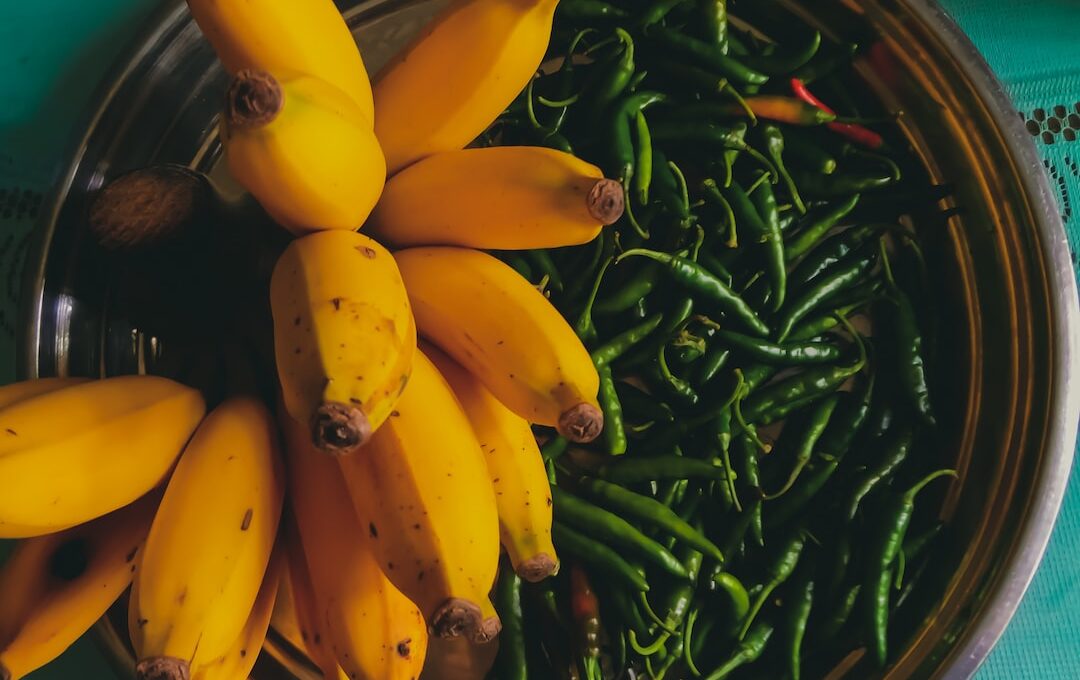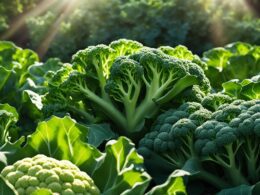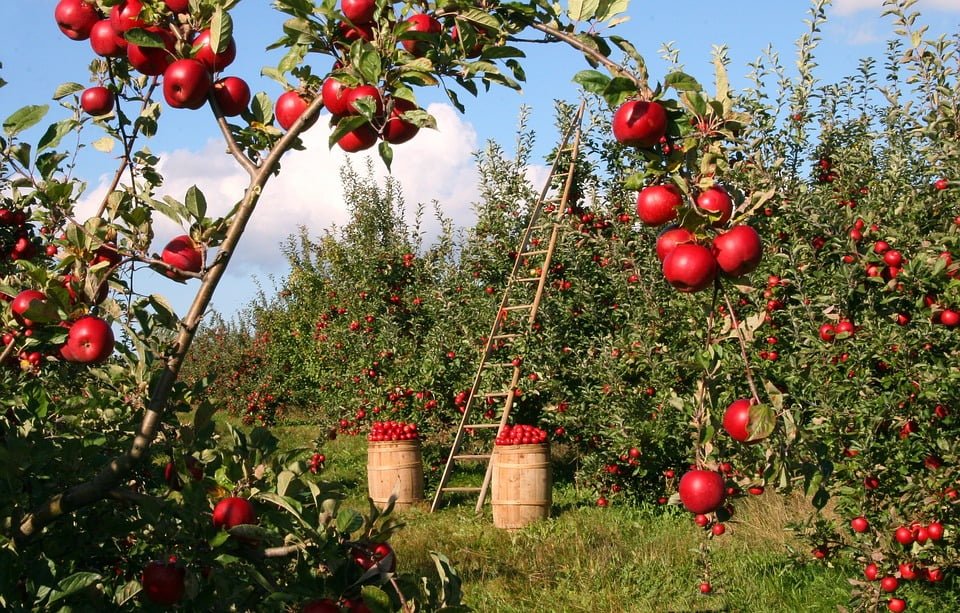Are you eager to grow your own banana pepper plants but unsure about how tall they will become? Don’t worry! In this article, we will guide you through everything you need to know about the potential height of banana pepper plants.
By understanding the ideal growing conditions, factors that influence plant height, and troubleshooting common issues, you will be able to ensure your plants grow to their full potential. Whether you have limited space or want to plan your garden layout, having an idea of the average height of banana pepper plants will be essential.
So, let’s dive in and discover the secrets to growing tall and healthy banana pepper plants. Get ready to enjoy a bountiful harvest and savor the delicious taste of your homegrown banana peppers!
Quick Summary
- Understanding the ideal growing conditions for banana pepper plants is essential for maximizing their potential height.
- Providing support for tall banana pepper plants is important to prevent them from bending or breaking under their own weight.
- Banana peppers should be harvested when they are fully mature, which is indicated by their firmness, vibrant yellow color, and length of around 6 to 8 inches.
- Banana peppers are versatile in culinary uses and offer numerous health benefits due to their vitamin C content and the anti-inflammatory properties of capsaicin.
Ideal Growing Conditions for Banana Pepper Plants
Did you know that banana pepper plants can reach their full potential when they’re grown in ideal conditions? To ensure the best growth and productivity of your banana pepper plants, it’s important to provide them with the right care and create an environment that promotes their well-being.
When it comes to banana pepper plant care, there are a few key factors to consider. Firstly, banana pepper plants thrive in warm climates, so it’s important to choose a sunny spot in your garden or use a greenhouse if you live in a cooler region. They prefer well-drained soil that’s rich in organic matter, so make sure to amend the soil with compost before planting. Additionally, regular watering is essential, as banana pepper plants prefer moist soil but can’t tolerate standing water.
When it comes to pests and diseases, banana pepper plants are relatively resistant. However, common pests like aphids, slugs, and snails can still pose a threat. To prevent infestations, regularly inspect your plants and remove any pests you find. In case of diseases like bacterial spot or powdery mildew, ensure proper air circulation and avoid overhead watering, as these conditions can promote their development.
By providing your banana pepper plants with these ideal growing conditions and taking necessary precautions against common pests and diseases, you can help them reach their full potential and enjoy a bountiful harvest of delicious and spicy banana peppers. Remember to always prioritize safety when working in the garden and follow proper gardening practices.
Determining the Potential Height of Banana Pepper Plants
With their stems stretching towards the sky, banana pepper plants reach impressive heights. As a gardener, it’s important to understand the potential growth and height of your plants to ensure their safety and success.
Banana pepper plants have the ability to grow anywhere between 18 and 36 inches tall, depending on various factors. Providing the ideal growing conditions, such as proper sunlight, watering, and soil nutrients, will promote healthy growth and maximize the plant’s potential height.
To determine the potential height of your banana pepper plants, it’s essential to monitor their growth regularly. Start by measuring the height of the plant when it begins to sprout. Keep track of its progress by measuring it every week or two. This will give you a good indication of how tall your plants are growing and allow you to take appropriate measures if necessary.
When it comes to plant height, safety is paramount. Ensure that your banana pepper plants have sufficient support to prevent them from bending or breaking under their own weight. Staking or using tomato cages can help provide the necessary support and keep the plants upright.
By taking these precautions, you can enjoy the beauty and bounty of your tall banana pepper plants while keeping them safe and secure.
Factors That Influence Banana Pepper Plant Height
When it comes to determining the potential height of banana pepper plants, there are a few key factors to consider. First, the variety of banana pepper plant you choose can greatly influence its height. Some varieties are naturally taller than others.
Additionally, the way you grow and care for the plants, such as using certain growing techniques and pruning, can also impact their height.
Varieties of Banana Pepper Plants
One of the most important factors to consider when growing banana pepper plants is the variety you choose. There are several different varieties of banana pepper plants available, each with its own unique characteristics.
Some varieties, such as the Sweet Banana pepper, can grow up to 6 inches long, while others, like the Hungarian Yellow Wax pepper, can reach up to 12 inches in length.
When selecting a variety, it’s important to consider your specific needs and preferences. Additionally, different varieties may require different levels of care, so it’s important to research banana pepper plant care and be aware of common pests and diseases that can affect these plants.
By choosing the right variety and providing proper care, you can ensure that your banana pepper plants grow to their full potential.
Growing Techniques and Pruning
To maximize the potential of your banana pepper crop, employ effective growing techniques and incorporate regular pruning into your plant care routine. By using proper growing methods, you can ensure that your banana pepper plants reach their maximum height and produce a bountiful harvest.
Start by planting your pepper plants in well-draining soil and providing them with ample sunlight. Regularly watering your plants is essential, but be careful not to overwater as this can lead to root rot. Additionally, it’s important to implement pest control measures to protect your plants from common pests such as aphids and caterpillars. Consider using organic insecticides or companion planting with beneficial insects to naturally deter pests.
Finally, prune your plants regularly to promote air circulation and remove any diseased or damaged leaves. Following these steps will help you grow healthy and productive banana pepper plants.
Is the Height of Habanero Plants Similar to Banana Pepper Plants?
The habanero plant height information varies from that of banana pepper plants. While banana pepper plants usually grow to a height of 2-3 feet, habanero plants can reach anywhere between 2-5 feet. This disparity in height is crucial for gardeners looking to cultivate these peppers, as it affects their growth and management.
Average Height of Banana Pepper Plants
Banana pepper plants can reach an average height of around three feet, so you’ll enjoy a bountiful harvest of these spicy delights. To help you visualize the potential growth of these plants, here are three sub-lists that describe the cultivation methods you can use:
-
Planting: Start by selecting a sunny location in your garden, ensuring that the soil is well-drained and rich in organic matter. Dig a hole deep enough to accommodate the root ball of the plant and gently place it in the hole. Backfill the hole with soil and water thoroughly. This will give your banana pepper plants a strong start.
-
Watering: To ensure healthy growth, water your banana pepper plants consistently. However, be cautious not to overwater them, as this can lead to root rot. It’s crucial to maintain a balance and provide regular, deep watering to keep the soil moist but not waterlogged.
-
Pruning: Regular pruning helps to maintain the overall health and shape of your banana pepper plants. Remove any dead or diseased leaves, as well as any suckers that may appear. This will allow the plant to focus its energy on producing more peppers.
By following these cultivation methods, you can safely enjoy the potential growth of your banana pepper plants, ensuring a successful harvest.
Troubleshooting Common Height Issues
If you’re facing issues with the height of your banana pepper plants, fret not! There are common pest control methods and techniques you can use to troubleshoot these height issues and promote healthy root growth.
One common issue that can affect the height of your plants is pests. Pests like aphids, spider mites, and whiteflies can stunt the growth of your banana pepper plants. To combat these pests, you can use organic pest control methods such as neem oil or insecticidal soap. These methods are safe for both you and your plants, ensuring the health and safety of your garden.
Another factor that can affect the height of your plants is root growth. If your plants have weak or stunted roots, they may struggle to reach their full height potential. To promote healthy root growth, make sure your plants are planted in well-draining soil and water them consistently. Additionally, you can use root stimulants or fertilizers specifically designed to promote root growth.
By addressing common pest control issues and promoting root growth, you can help your banana pepper plants reach their optimal height and ensure a bountiful harvest.
Harvesting and Using Banana Peppers
When it comes to harvesting banana peppers, you’ll want to wait until they’ve reached their desired size and color. Typically, banana peppers are ready to harvest when they’re about 6 to 8 inches long and have turned a vibrant yellow or red.
Once you’ve picked your peppers, they can be used in a variety of culinary dishes, such as salads, sandwiches, and stir-fries. They add a mild and tangy flavor to your meals.
When to Harvest
At the optimal time for harvesting, banana pepper plants will have reached their maximum height. To ensure a safe and successful harvest, here are three signs of ripe banana peppers to look for:
-
Firmness: Ripe banana peppers will feel firm to the touch. Avoid picking peppers that are soft or mushy, as they may be overripe or spoiled.
-
Color: Fully mature banana peppers will have a vibrant yellow color. The peppers should be uniformly yellow, without any green spots or streaks.
-
Size: Ripe banana peppers typically measure around 6 to 8 inches in length. They should have a plump and elongated shape.
By waiting for the banana pepper plant to reach its maximum height and following these signs of maturity, you can ensure that you harvest safe and flavorful peppers for your culinary adventures.
Culinary Uses
Now that you know when to harvest your banana pepper plants, let’s talk about the exciting culinary uses for these delicious peppers. You may be wondering, what can I do with banana peppers? Well, the possibilities are endless!
Banana peppers can be used in a variety of recipes to add a tangy and mildly spicy flavor. They’re commonly used in sandwiches, pizzas, salads, and even pickled for a zesty kick. But it’s not just about the taste, banana peppers also offer numerous health benefits.
They’re rich in vitamin C, which boosts your immune system, and contain capsaicin, a compound known for its anti-inflammatory properties. So not only can you enjoy the mouthwatering flavors of banana pepper recipes, but you can also feel good about their nutritional value.
Frequently Asked Questions
Can banana pepper plants grow indoors?
Yes, banana pepper plants can grow indoors. To ensure their growth, provide them with the best indoor lighting, such as fluorescent or LED lights. This will keep them safe and thriving.
How long does it take for banana pepper plants to reach their full height?
Banana pepper plants typically take about 70-85 days to reach their full height. Factors like sunlight, temperature, soil quality, and proper watering can affect their growth. Make sure to provide optimal conditions for healthy and safe plant growth.
Are there any specific fertilizers or soil amendments that can help increase the height of banana pepper plants?
To increase the height of your banana pepper plants, consider using fertilizers rich in nitrogen and potassium, or soil amendments like compost or vermicompost. These can provide essential nutrients and improve soil quality for healthy plant growth.
Can the height of banana pepper plants be controlled or pruned to a desired height?
To control the height of banana pepper plants for safety, you can use pruning techniques like trimming the top growth and removing leggy stems. Avoid using growth hormones, as they may pose risks to your health.
Do different varieties of banana pepper plants have different average heights?
Different varieties of banana pepper plants can have different average heights due to factors such as genetics and growing conditions. Understanding these average height variations can help you choose the right variety for your desired plant height while ensuring safety.
Conclusion
So, now you know how tall banana pepper plants can grow! By providing them with ideal growing conditions, such as full sunlight, well-drained soil, and regular watering, you can help them reach their maximum potential height. Factors like genetics, pruning, and fertilization also play a role in determining the height of these plants.
On average, banana pepper plants can grow to be around 2 to 3 feet tall. If you encounter any height issues, such as stunted growth or excessive legginess, troubleshooting techniques can help. Finally, once your banana pepper plants have reached their desired height, you can start harvesting and enjoying the delicious peppers they produce.









